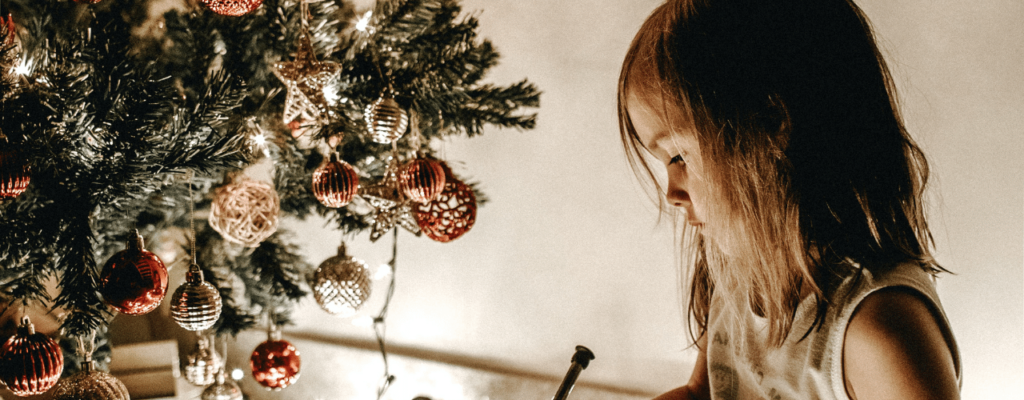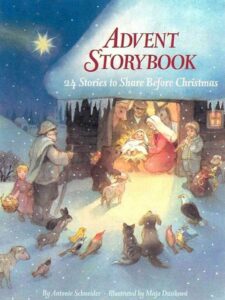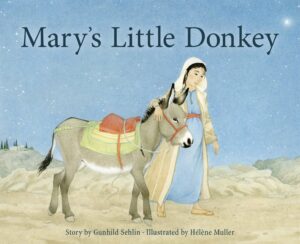Creating Mindful and Meaningful Christmas Celebrations

Children love rituals and traditions. There is nothing more beautiful than watching children’s shiny eyes and their contagious excitement in anticipation of a festive event, such as, for example, the approaching Christmas season.
Children are innate spiritual beings from birth. Special celebrations can be celebrated in such a way that nurture a sense of awe, reverence and wonder for the specific occasion. When we assign meaning and purpose to a celebration, we provide children with rich nourishment for their souls. Something they can tap into throughout their lives and provides them with an inner strength. By mindfully creating meaningful celebrations, we create pockets of reflection and contemplation which are building stones for emotional wellbeing, self-regulation, competence and resilience.
“Rituals teach our children that life is good, and that there is order and harmony.”
Having been raised in Germany with a culture full of traditions and rituals, especially during childhood, my biggest pride was to share the joys and richness of celebrations such as Easter, the Lantern Light Festival of St Martin and Christmas with Australian families. Over the many years many of my friends and families of my school community where I work have come to cherish these traditions as they have witnessed how much richness it can bring into their families.
The focus on Santa alone and a materialist approach to the Christmas celebrations can strip away the opportunity to create something really special. This more hedonic approach is short lived. Yet, if we approach Christmas from a different angle it will become a eudaemonic experience, a longer lasting joy and ritual that will weave itself into the tapestry of our family’s life and memory.
“Rituals are keepsakes that live in our hearts”.
Rituals provide islands of consistency, calmness and ample opportunities for connection. Moments where we can share ourselves, our fears, struggles and our joys. Rituals bring us immense hope especially during times of uncertainty. They help us to foster a sense of belonging and identity. They show us who we are as a family and they can be passed on from one generation to another, strengthening the bond and connection with one another.
“Rituals connect us to the past by keeping us linked to our people, preventing us from losing touch with who we are and where we came from. A reminder of our true identity.”
A review of 50 years of research on naturally occurring family routines and rituals has revealed that children from families with meaningful rituals do better academically and socially (Fiese et al., 2002). Studies have shown that practicing meaningful family rituals can also be a protective factor for anxiety and depression in adolescents as their connection to family is strong as a result of shared experiences.
Meg Cox, expert on rituals and author of The Book of New Family Traditions says that “rituals help children navigate change and learn values and practical skills. They also help children solve problems, heal from loss or trauma, generate wonderful memories, and much more”.
Rituals for a mindful Christmas
The Advent Season. Try and slow down the pace before Christmas and deliberately seek out times where you come together on a regular basis as a family to prepare yourself for Christmas. The Advent season is a preparation time (Advent meaning “the coming of something important”) and often more meaningful than the actual Christmas day itself which comes and goes so quickly and can be a downer for many.
The 24-day lead up becomes a meaningful, contemplative process and preparation time that can be woven into the busyness of the everyday by simply lighting one of the Advent candles at dinner time.
- Make or buy a simple circular Advent wreath for your family dinner, adorn it with four candles and some decoration. The season of Advent commences on Sunday, 28 November.
- Each Sunday leading up to Christmas, a new candle is lit.
- On the fourth Sunday of Advent, there are four candles lit, meaning that Christmas is near. The lighting of every Advent candle could be accompanied with a special Christmas/Advent story, a conversation, sharing a meal, reading a poem, a prayer or singing a song together.
- There are some lovely children’s Christmas storybooks available that can be used for these special gatherings that can be brief yet rich. “The Light in the Lantern” and “Mary’s Little Donkey” are lovely short stories for the 24 days leading up to Christmas.
A meaningful countdown. As an alternative form of an Advent Calendar, families can set up a nature or seasonal table, a special space where children can place all their treasures. The table could be set up with a special Christmas cloth and twenty-four stones that make a path for Mary and Joseph walking the journey to Bethlehem. Children can make the stable out of resources from nature and decorate this space with treasures from nature as they go along. It is an exciting countdown, an immersion in a process that lends itself to many meaningful conversations and engagements with the theme of Christmas.
Saint Nikolaus. 6 December. There are some beautiful stories and traditions about Saint Nikolaus who is also the Saint for children and the poor. Discussing the traditions of this Saint who is also the predecessor of Santa helps children to get to know and learn more about this magic and mystic figure who is the giver to children. That way the whole Santa thing becomes less tokenistic and adds more meaning to it.
Christmas Eve. In many cultures, Christmas is celebrated on Christmas Eve. Gathering together in the dark and lighting lots of candles brings magic into the room. Children love candles. Reading the “Night before Christmas” together, the actual Christmas story, listening to some traditional Christmas songs, sharing some poetry and hanging out the stockings helps everyone to slow down and join mindfully in anticipation of Christmas day.
Children love baking and making Gingerbread Houses. Accompanied with some children’s Christmas songs this provides for special connection time and conversation starters about the meaning of Christmas.
Fostering altruism and kindness. In our house we have the rule to make at least one gift. It could entail writing a poem, drawing a picture, writing a card of appreciation, a crafted gift, a photo or keepsake album. Simply, a present from the heart. Children love being involved in making something for others. It teaches them the importance of altruism, love and kindness, qualities which we want to nurture in our children, and which are the key messages of the Christmas story.
Gratitude and joy. This is a great season to start teaching our children an attitude of gratitude. Children as young as two years of age can participate in this empowering ritual. Simple questions such as: “What was the best thing you saw, heard, did today?” “What made you laugh?” “What did you do for someone else?” “What did someone else do for you?” teach children and adults to intentionally focus on all the positive things in our daily life. These questions can be shared around the dinner table, and the activity can be done daily or weekly.
Numerous studies have shown that intentionally practising gratitude is one of the most powerful mental health interventions.
Seeking out and cultivating joyful moments every day are also powerful rituals that can be practiced every day. We train our brain to look out for the good stuff rather than being caught up in all the negativity. Practicing gratitude and joy are central to the celebration of Christmas.
Nativity Set. Even though you might not celebrate the actual faith tradition, children love nativity sets. Again, they bring meaning and the purpose of the Christmas celebration into your homes, redirecting the focus from consumerism to the actual meaning of this feast day. Everyone can relate to the birth of a baby and the immense joy and hope it brings.
The sets can be bought or made. Some craft shops sell little kits that can be hand painted and assembled. Children can use the figurines for role-playing, storytelling and decoration under the Christmas tree.
“Rituals keep us in touch with the fundamentals of life. They connect us with the moral and spiritual qualities which are otherwise often overlooked in our busyness.”
It all might sound like hard work, but it really is not. Once set up, these rituals become part of your family’s everyday fabric and something to look forward to every year. They will give Christmas more meaning, strengthen your family bond and provide your children with a long- lasting sense of richness that even the best presents cannot buy.
Download HandoutHow do you want the Christmas season to be remembered?



